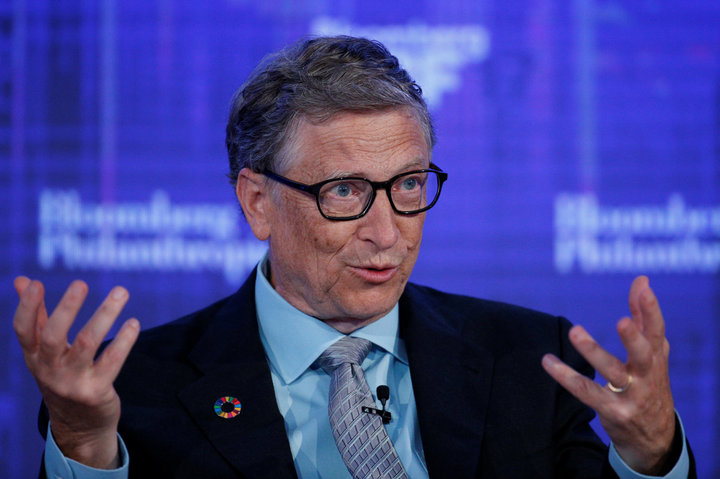If technology, not policy, is the culprit, it means inequality is something that happened, not something we did.

The most popular explanation for the sharp rise in inequality over the last four decades is technology. The story goes that technology has increased the demand for sophisticated skills while undercutting the demand for routine manual labor.
This view has the advantage over competing explanations, like trade policy and labor market policy, that it can be seen as something that happened independent of policy. If trade policy or labor market policy explain the transfer of income from ordinary worker to shareholders and the most highly skilled, then it implies inequality was policy driven, it is the result of conscious decisions by those in power. By contrast, if technology was the culprit, we can still feel bad about inequality, but it was something that happened, not something we did.
That view may be comforting for the beneficiaries of rising inequality, but it doesn’t make much sense. While the development of technology may to some extent have its own logic, the distribution of the benefits from technology is determined by policy. Most importantly, who gets the benefits of technology depends in a very fundamental way on our policy on patents, copyrights, and other forms of intellectual property.
To make this point clear, consider how much money Bill Gates, the world’s richest person, would have if Windows and other Microsoft software didn’t enjoy patent or copyright protection. This would mean that anyone anywhere in the world could install this software on their computer, and make millions of copies, without sending Bill Gates a penny. As a smart and ambitious person from a wealthy family, Bill Gates would probably still be doing fine in this world, but he would most likely not be among the super-rich. In fact, he would probably still be working for a living.
The argument for intellectual property is well-known. The government grants individuals and corporations monopolies for a period of time, which allow them to charge well above the free market price for the items on which they have a patent or copyright. This monopoly gives them an incentive to innovate and do creative work.
Of course this is not the only way to provide this incentive. For example, the government can and does pay for much research directly. We spend over $30 billion a year on bio-medical research through the National Institutes of Health. Various government departments and agencies finance tens of billions of research each year in a wide variety of areas. In fact, it was Defense Department research that developed the Internet and also Unix, the program that was the basis for Dos, Microsoft’s original operating system.
The government also directly or indirectly supports a large amount of creative and artistic work. The National Endowment for the Arts and Humanities capture headlines as political targets for the right, but in fact much more work is supported through the tax deduction for charitable contributions, which cover 40 cents on the dollar that wealthy people donate to orchestras, theaters, art museums, and other non-profit institutions that support the arts.
It is reasonable to argue whether patents and copyrights are the most efficient mechanisms for supporting innovation and creative work. In my book, Rigged: How the Globalization and the Rules of the Modern Economy Were Structured to Make the Rich Richer, I argued that in the 21st century they are in fact very inefficient mechanisms for this purpose. But separate from the question of whether these are the best mechanisms, there is no real dispute that intellectual property redistributes money from the people who don’t own it to the people who do. Not many people with just high school degrees own patents or copyrights; they are part of the story of upward redistribution.
Since intellectual property can be either longer and stronger or shorter and weaker, the decision about how much intellectual property we have is implicitly a decision about a trade-off between growth and inequality. (This assumes that longer and stronger IP rules lead to more growth, which is a debatable point, especially since productivity growth has slowed to a crawl in the last decade.) If we are concerned about the degree of inequality in society, one way to address it would be to shorten the duration of patents and copyrights or lessen their scope so that they are less valuable.
That would mean less money for the pharmaceutical industry, the medical equipment industry, and the software industry, as well as many other sectors that disproportionately benefit from IP. Shareholders in these industries would see a hit to their income, as would the top executives and highly educated workers they employ. The rest of the country would see a rise to their income as the price of a wide range of products would fall sharply.
And, there is a huge amount of money at stake. We are on a path to spend more than $450 billion this year on prescription drugs alone. If these drugs were sold in a free market without patents or other forms of protection we would almost certainly pay less than $80 billion. (Imagine the next great cancer drug selling for a few hundred dollars rather than a few hundred thousand dollars.) The difference of $370 billion is almost 2 percent of GDP. It is roughly six times as much money as was at stake in the debate over the repeal of the Affordable Care Act. If we add in the other sectors where IP is responsible for a large portion of the price, the sum would almost certainly be two or three times as large.
Since 1980 there have been a wide variety of measures that have strengthened and lengthened IP protections in a variety of areas. The scope of patentability has been extended to new areas such as software, business methods, and life forms. Copyright duration was extended from 55 years to 95 years (retroactively), and it was extended to the Internet in a way that makes third parties responsible for enforcement. And strong IP rules were imposed on developing countries as a condition of access to U.S. markets in trade deals.
It is questionable how much these or other measures boosted economic growth, if at all, but in none of these cases was there any serious discussion of the impact on distribution. In other words, we never heard members of Congress debating whether stronger IP rules could have a sufficiently negative effect on distribution that would more than offset any benefits from increased growth.
As we go forward and hear tales of robots and artificial intelligence displacing large numbers of workers, we should realize that any redistribution from workers to “owners” of these technologies is a policy choice. If all the knowledge associated with new technologies were in the public domain they would be cheap. We would all be able to buy the most advanced robots for little more than the cost of the materials they contained. The robots would clean our houses, cook our dinners, mow our lawns, and do our laundry. New life saving drugs would cost little more than generic aspirin and the most sophisticated medical scanning equipment would be available at the price of an old-fashioned X-Ray.





